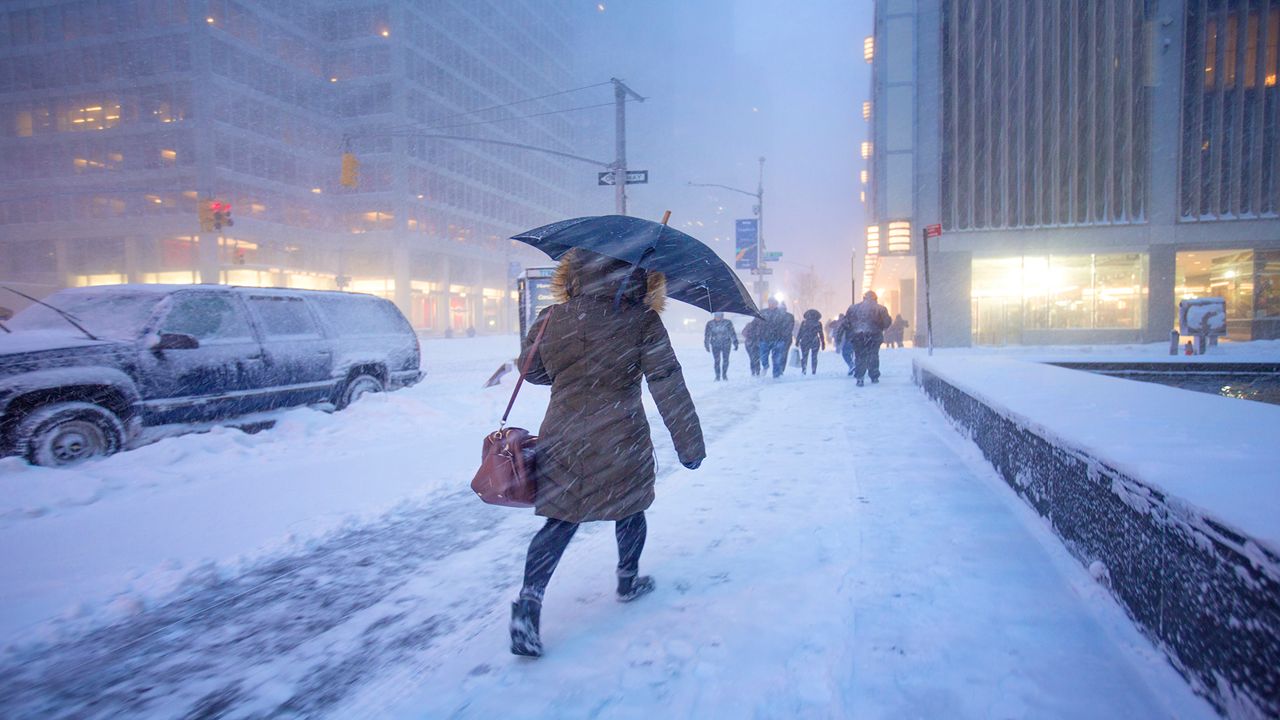Now that Thanksgiving is done and December is about to begin, we know that it’s just a matter of time before we get our first real snowfall in New York City.
Here’s a look at when we might need those shovels.
Statistically, Dec. 24 is the date of the first one-inch snowfall for NYC, according to Rob Frydlewicz, a New York City weather historian who lives in Greenwich Village.
But don’t mark your calendar to see snow on Christmas Eve. Dec. 24 is the average. That means you take all the dates for the first snowfall and then calculate the average; some years, the first snow can come much earlier.

The earliest snow we’ve ever seen was in 2012 when we had flakes collect before Halloween. On Oct. 29, 2012, we measured 2.9 inches of snow.
Last winter, our first measurable snow wasn’t until Feb. 1. Just 0.4 inches accumulated.
Overall, last year was a big bust for snow lovers. We had total snowfall for the season of just 2.2 inches. The average is about 26 inches. Last winter was the least snowy for NYC since records began in 1869.
Also, New York City has a snowless streak going. The last time we had an inch of snowfall at Central Park was Feb. 13, 2022. That's more than 650 days, and the longest streak of consecutive days without an inch of snow. The previous record was 383 days in 1997-98.

Even though we set records last year for the least snow, there have been other years where we had to wait longer for the first inch. Check this out:
In 1998, city children had to wait until March 22 to get their first snow. Five inches fell, and I’m sure many kids were happy to see the snow. The parents probably weren’t as excited.
March 22 is the latest we’ve seen our first snowfall.
Our team of meteorologists dives deep into the science of weather and breaks down timely weather data and information. To view more weather and climate stories, check out our weather blogs section.








